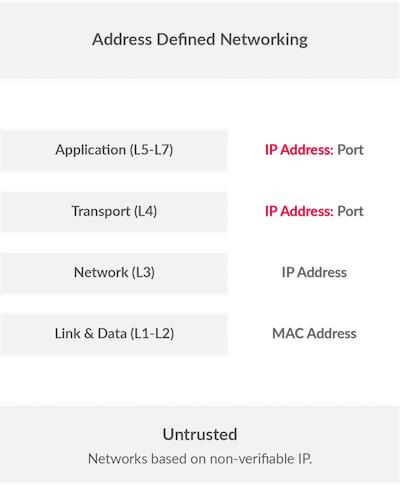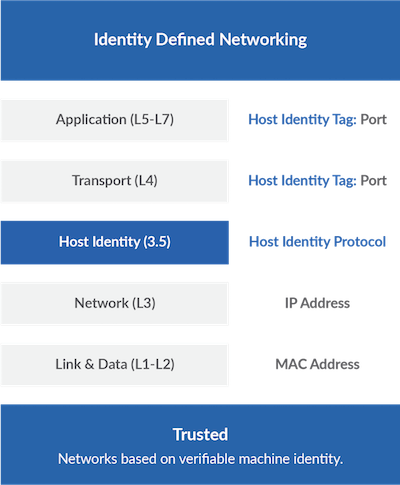Host Identity Protocol (HIP)
HIP is an open standard that delivers a better approach to security, authentication, mobility, and resiliency for networks. The protocol has been under development for over 20 years in coordination with several Fortune 500 companies and standards bodies, before being officially approved in 2015 by the IETF. Tempered is the first company to commercially leverage the technology.
HIP separates the role of an IP address as both host identity and location within a network, such that hosts are instead identified using cryptographic identities in the form of public keys. We can then define device-to-device trust relationships based on the host identity instead of the IP address.
In a traditional networking model, referred to below as address-defined networking, routing is done via IP addresses. The upper layers of the standard networking framework, or stack, represent software that implements network services like encryption and connection management. The lower layers of the framework implement hardware-related functions like routing, addressing, and flow control.

In an identity-defined networking model, the HIP identity layer inserts itself in the stack between the network and transport layers. As a result, applications and transport protocols use a host identity tag instead of an IP address. Each host is now identified on the network with a unique cryptographic identity, while the IP address is used only for location.

